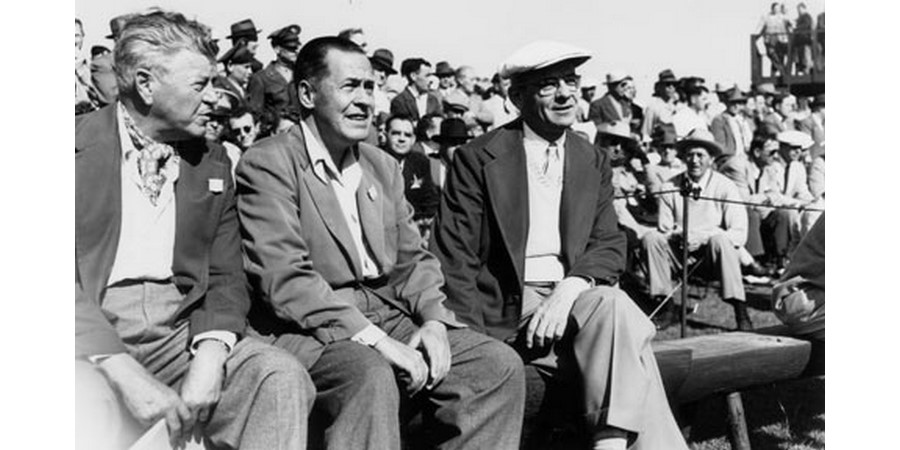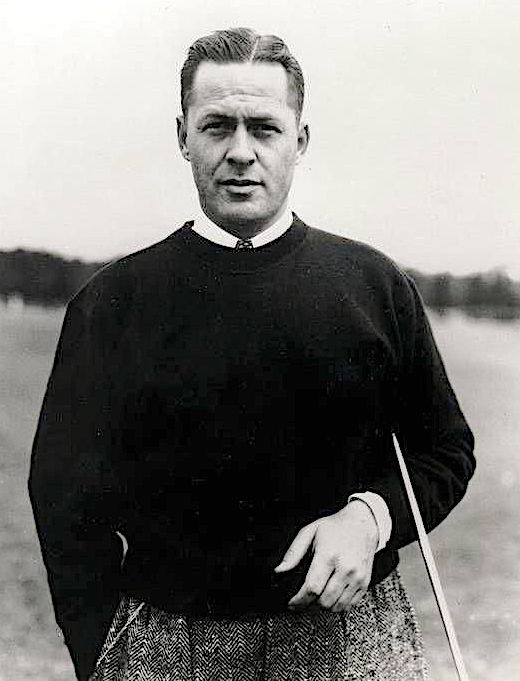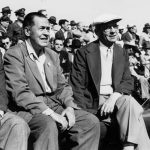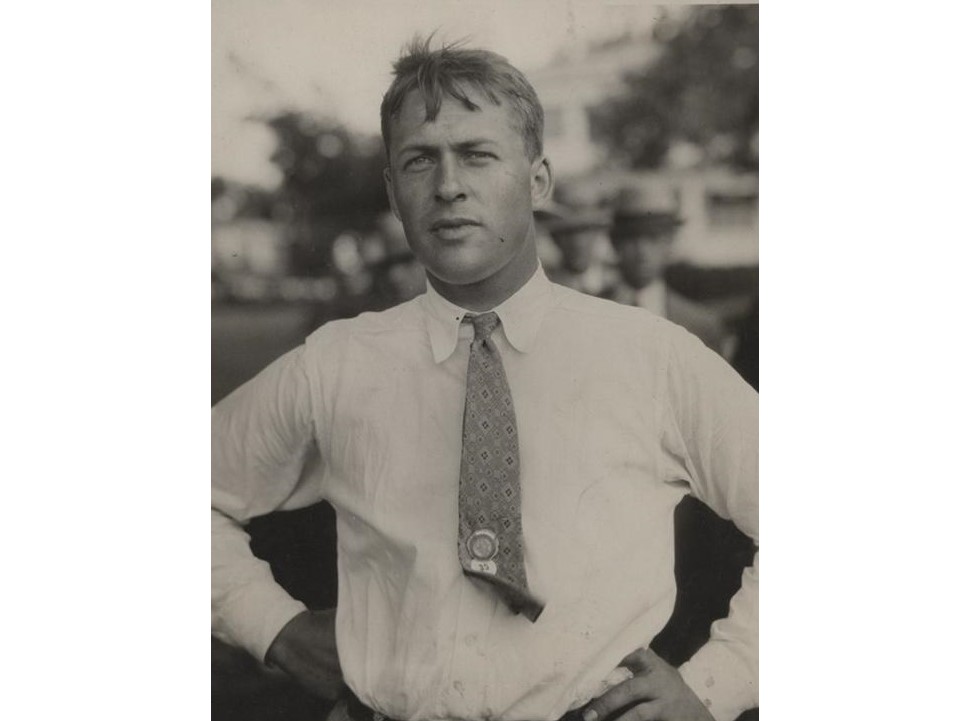Augusta, GA. The passage of time can dim past achievements. So much of modern sport — golf included — is based on the moment. The here and now.
The grainy sepia photos and outdated video of years gone by can often obscure the remarkable achievements by earlier athletes.
One hundred years ago the golden age of sports took place in the United States. The 1920s was the decade when several men catapulted the sports scene to unimaginable heights as champions in their respective sports.
Babe Ruth in baseball, Jack Dempsey and Gene Tunney in boxing, Harold “Red” Grange in college football, Bill Tilden in tennis and in golf – Bob Jones.
Each man personified an unshakeable resolve to attain excellence. Each brought to life a captivating personality — cultivating fans and setting the table for future athletes to follow.
The annual Masters tournament is revered by many globally. The first major of the year is a salute to spring – a rebirth of color and life.
The driving force for Augusta National was Bob Jones. While Jones was often referred to as “Bobby” he much preferred the more adult-like tones of being called Bob.
Along with co-founder Clifford Robert it was Jones who wanted to create a golf course that aligned with his deep love of the Old Course at St. Andrews.
Jones made it a point in selecting the one man he believed could encapsulate the enduring magic of the famed Scottish links by hiring the renowned Dr. Alister MacKenzie.
The Augusta Invitational — as the Masters was called in its first few years given the reluctance by Jones to place such a lofty name on the event he created — took place in 1934. Four years after Jones had announced his formal retirement from competition but the anticipation was present to see the man who so thoroughly dominated play in the 1920s.
How dominant?
Between 1923 and 1930 Jones played in 21 major events (US Open, US Amateur, The Open, British Amateur) — winning 13. In 1930 he achieved the remarkable feat in winning all four in one calendar year. In those years he accomplished the remarkable winning percentage of 62%. He also finished as runner-up four times.
In addition, Jones won seven combined Opens before retiring from formal competition at the age of 28 — a feat only matched years later by Jack Nicklaus but one that took the Golden Bear to age 40 to achieve.
Jones was the first golfer to win both the US Open and The Open in the same year in 1926 and is the only golfer to have done it twice — the second time coming in 1930.
To be clear — Jones was fortunate to have been born in a family of means. His father “Colonel” Robert Purmedus Jones, was an Atlanta lawyer and well-connected in the Atlanta community. Jones played locally at the Atlanta Athletic Club’s East Lake Golf Club and received instruction from the highly acclaimed professional Stewart Maiden, a native of Scotland.
Jones was a child prodigy and his talents in golf started at an early age. By 14 he had won the inaugural Georgia Amateur Championship. Soon the golf world was buzzing about what this phenom was accomplishing and what the future promised.
But the sum total of who Jones was went beyond his considerable skills with golf clubs. Jones earned an engineering degree from Georgia Tech, an English Literature degree from Harvard and after a short stint at Emory University passed the bar exam after only three semesters. A true renaissance man.
During World War II Jones was commissioned as a captain in June 1942 and was assigned to the First Fighter Command at Mitchel Field in Long Island, N.Y.
He was promoted to major in March 1943 and later that year was assigned as a military intelligence officer for the Ninth Air Force. He went to England in late 1943.
In June 1944, Jones landed on the beach in Normandy the day after the D-Day invasion led by Gen. Dwight D. Eisenhower, the future president and Augusta National member.

Jones was discharged in August 1944 with the rank of lieutenant colonel. He arrived back in Atlanta later that month to little fanfare.
Unfortunately, in 1948 Jones was diagnosed with a rare spinal disease condition called syringomyelia which eventually ended his wherewithal to walk.
He played his final Masters in 1948 and even with enduring pain attended every tournament through the 1968 event.
When the inaugural Eisenhower Trophy matches (World Amateur Team Championship) was held at the Old Course in St. Andrews in 1958, Jones was named USA team Captain. During his time in St. Andrews, Jones was named a Freeman of the City, becoming only the second American to be so honored, the other being Benjamin Franklin in 1759.
The love and affection townspeople had for Jones was front and center as Jones departed Younger Hall and the assembly spontaneously serenaded him off to the traditional tune of “Will Ye No Come Back Again.”
Today, a scholarship exchange bearing the Jones name exists between the University of St. Andrews and Emory University, Queen’s University, The University of Western Ontario and the Georgia Institute of Technology in Atlanta. At Emory, four students are sent to St Andrews for an all-expenses-paid year of study and travel. In return, Emory accepts four students from St Andrews each year. The program, the Robert T. Jones Scholarship, is among the most unusual scholarships offered by any university.
Jones died December 18, 1971 at the age of 69.

Each year when the green jacket ceremony is conducted by CBS-Sports in Butler Cabin his portrait is seen in the background.
The lasting legacy of Bob Jones is a tournament that now commands global sports attention. Far more than just a 72-hole event. It is a testimony to a man whose talents and contributions were considerable in a range of areas.
When the greats of the game are assessed it is clear Jones remains a compelling figure and worthy of Mount Rushmore status with the likes of Ben Hogan, Jack Nicklaus and Tiger Woods.
Since 1955, the United States Golf Association (USGA) fittingly bestows its highest honor in honor of him. It recognizes an individual who demonstrates the spirit, personal character and respect for the game exhibited by Jones.
Yes, Bob Jones is gone but his spirit remains constant at Augusta National.
He is truly — master of the Masters.
Photos courtesy: Atlanta Athletic Club



